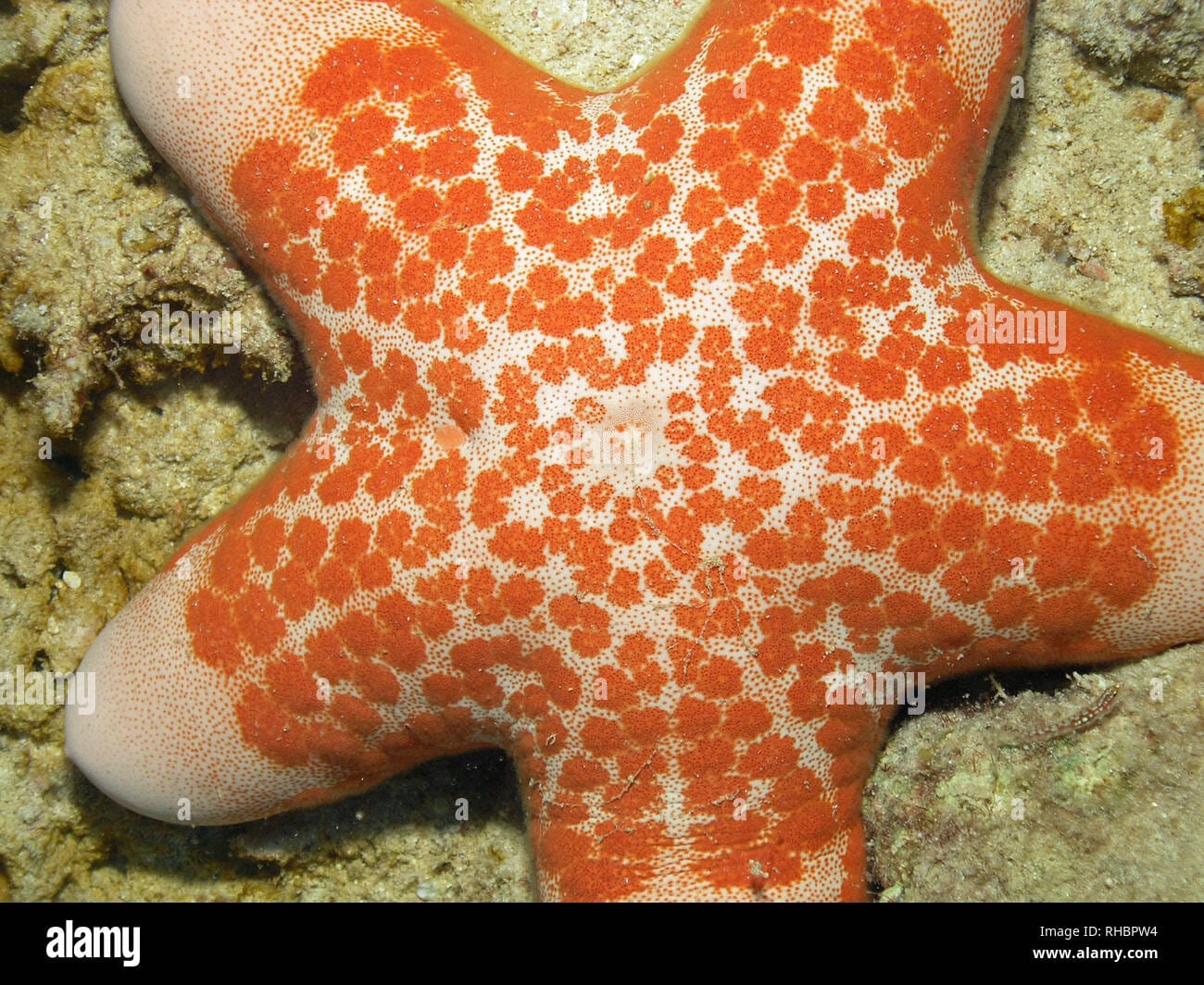The granulated starfish, affectionately known as the “doughboy of the reef” due to its plump, rounded form, is a captivating inhabitant of the Indo-Pacific. This comprehensive guide dives deep into the world of Choriaster granulatus, exploring its unique biology, behavior, and the challenges it faces in an ever-changing ocean environment. Join us as we uncover the secrets of this remarkable echinoderm, from its preferred coral reef habitat to its fascinating feeding habits. [https://www.lolaapp.com/grizzly-tobacco-pouches]
Doughboy of the Reef: A Unique Starfish
The granulated starfish (Choriaster granulatus), often called the doughboy starfish because of its puffy, rounded shape and often pale pinkish color, stands alone as the only member of its genus, Choriaster. This makes it a particularly interesting subject for marine biologists and ocean enthusiasts alike.
Appearance: A Starfish Unlike Any Other
Imagine a starfish, but rounder, almost cushion-like. That’s our doughboy! Instead of the typical long, slender arms of many starfish, the granulated starfish has five short, stubby arms, giving it an almost pentagonal silhouette. These arms, along with its central disc, are covered in tiny, grain-like bumps called granules or papillae, the source of its common name. These granules, often appearing as small brown specks against a backdrop of pale pink, grayish-yellow, or even a more vibrant reddish hue, give the starfish a slightly rough texture. While they may look delicate, these starfish can grow surprisingly large, reaching up to 11 inches (27 cm) in radius – about the size of a dinner plate!
Color Variations and Unique Features
Although typically a pale pink, the granulated starfish exhibits remarkable color variations ranging from pale grey and yellow to a striking red. Some experts suggest these variations may be influenced by factors like diet, age, or habitat, though more research is needed. Unlike many other starfish species, C. granulatus lacks pedicellariae, the tiny, pincer-like structures used for defense and cleaning. However, it possesses the incredible ability to regenerate lost arms – a crucial adaptation in its reef environment.
A Tropical Paradise: Habitat and Distribution
The granulated starfish thrives in the warm, sunlit waters of the Indo-Pacific region, a vast area stretching from the eastern coast of Africa to the vibrant coral gardens of Australia’s Great Barrier Reef. [https://www.lolaapp.com/how-much-money-do-you-get-for-donating-sperm]
Depth and Temperature Preferences
These starfish are typically found in relatively shallow waters, ranging from about 1.5 meters (5 feet) to approximately 53 meters (174 feet) deep, where sunlight can penetrate. They prefer warmer waters, ideally between 24°C and 29°C (75°F and 84°F). While they may tolerate slight temperature fluctuations temporarily, prolonged exposure to temperatures outside this range could likely stress the animal.
Preferred Habitats
Within this depth range, granulated starfish are often found near rocky reefs, preferring the adjacent rubble and sandy patches rather than the reef itself. This preference probably provides a more stable and slightly softer substrate compared to the hard coral structures. Specific locations where they have been observed include the Red Sea, the Great Barrier Reef, the waters around East Africa, Vanuatu, Fiji, and Papua New Guinea.
Dining on the Reef: Diet and Feeding
The granulated starfish is a carnivore, with a specialized diet and a rather unusual way of eating.
Coral Polyps: The Main Course
Their primary food source is coral polyps, the tiny animals that build coral reefs. Using hundreds of tiny tube feet located on the underside of their arms, the starfish grips the coral. Then, in a remarkable feat of biological engineering, it extends its stomach out through its mouth, enveloping the polyp and digesting it externally before retracting its stomach. This external digestion allows the starfish to absorb the nutrients while avoiding the indigestible parts of the coral skeleton.
Supplemental Food Sources
While coral polyps form the bulk of their diet, granulated starfish are opportunistic feeders and will also consume other small invertebrates, including crustaceans, mollusks, and worms. They are also known to scavenge on carrion, consuming the remains of dead animals, contributing to nutrient cycling on the reef.
Life Cycle and Reproduction: A Story of Transformation
Like many starfish, the granulated starfish undergoes a fascinating metamorphosis. While the specifics of granulated starfish reproduction are still under investigation, we can look at general starfish reproduction for clues.
From Larvae to Adult
The life cycle begins with fertilized eggs hatching into free-swimming, planktonic larvae. These larvae drift with ocean currents, aiding in dispersal and colonization of new areas. As the larvae mature, they eventually settle on the seafloor and undergo metamorphosis, transforming into juvenile starfish with the characteristic five arms.
Reproduction: Unraveling the Mysteries
While some starfish can reproduce asexually, regenerating from severed limbs, the primary reproductive method for most is sexual reproduction. Further research is needed to definitively determine the exact mechanisms and frequency of both sexual and asexual reproduction in C. granulatus.
Facing the Future: Threats and Conservation
While much remains to be discovered about the granulated starfish, we know it faces several threats.
Parasitic Limpets
Small parasitic limpets can attach to the underside of the starfish’s arms, potentially causing deformities and weakening the animal. The extent of the impact of these parasites on granulated starfish populations warrants further study.
Habitat Degradation
Like many coral reef inhabitants, granulated starfish are vulnerable to changes in their environment. Ocean acidification, resulting from increased carbon dioxide levels in the atmosphere, may hamper their ability to build and maintain their calcium carbonate skeletons. Habitat loss due to coral reef degradation from pollution, destructive fishing practices, and rising ocean temperatures also poses a significant threat.
Conservation Status and Ongoing Research
The current conservation status of the granulated starfish requires further investigation, with organizations like the IUCN being key sources for updated information. Ongoing research and monitoring are essential to fully understand the challenges this species faces and to implement effective conservation strategies. Its well-being is intimately linked to the health of the coral reef ecosystem, highlighting the urgent need for protecting these vulnerable underwater worlds.
- Unveiling the Enigma: Mansoureh Khojasteh Bagherzadeh’s Public Appearances & Private Life in Iran - July 18, 2025
- Unveiling the Mystery: Mansoureh Khojasteh Bagherzadeh’s Husband: A Rare Glimpse into a Private Life - July 18, 2025
- Unveiling Masoud Khamenei’s Mother: Power, Influence, and Iran’s Future - July 18, 2025
















